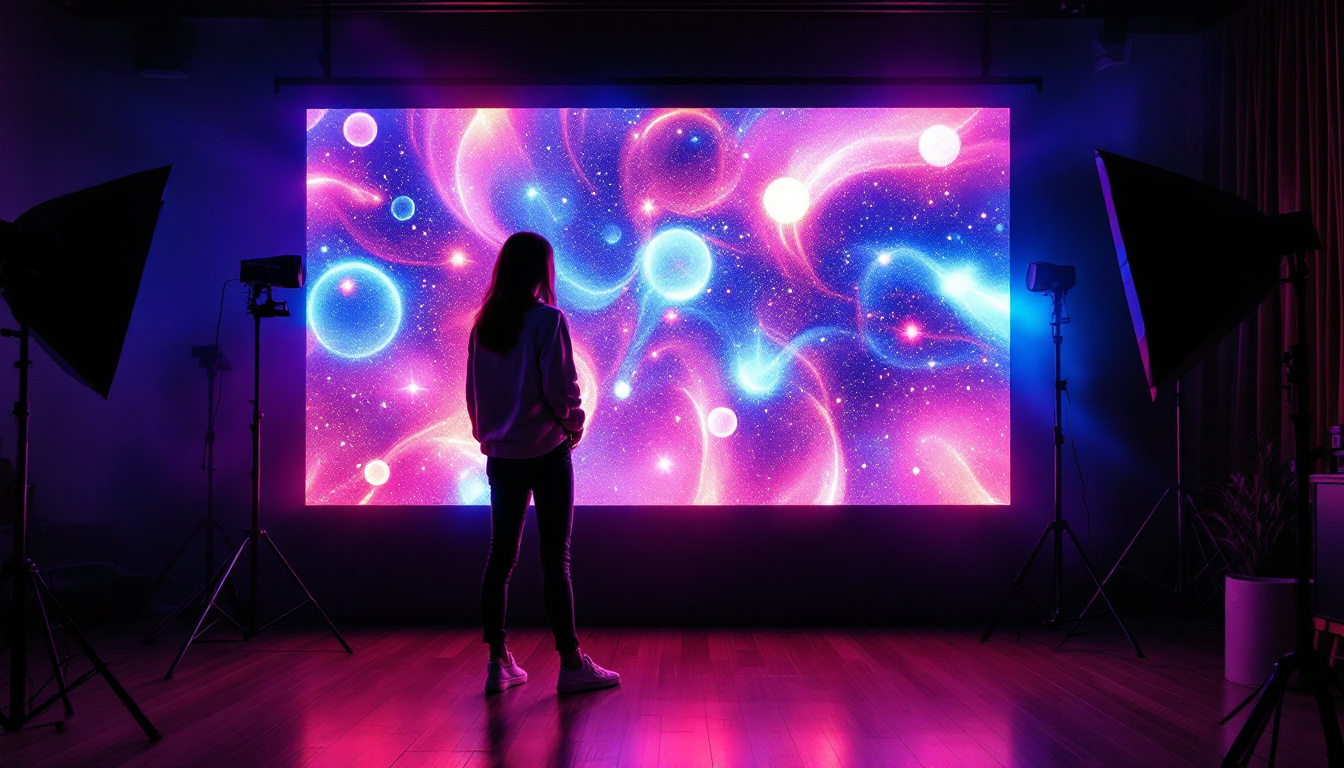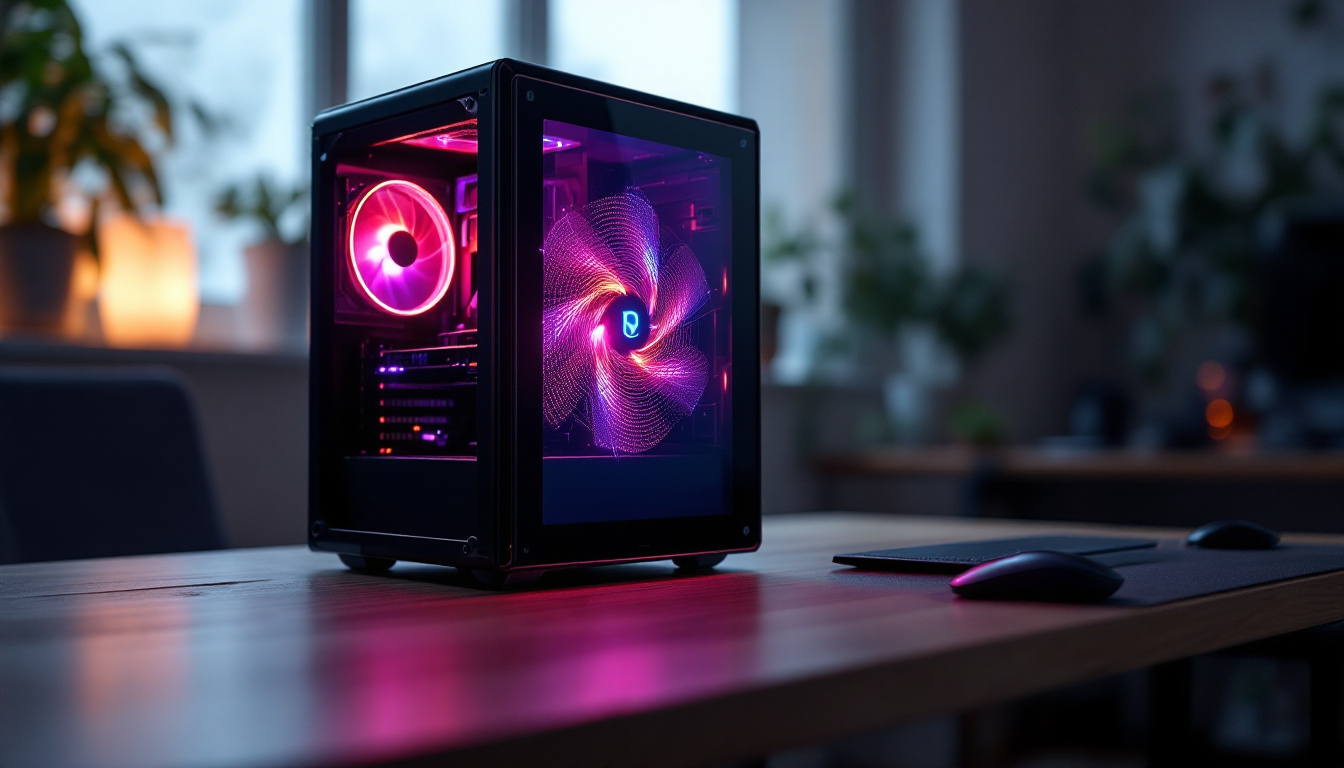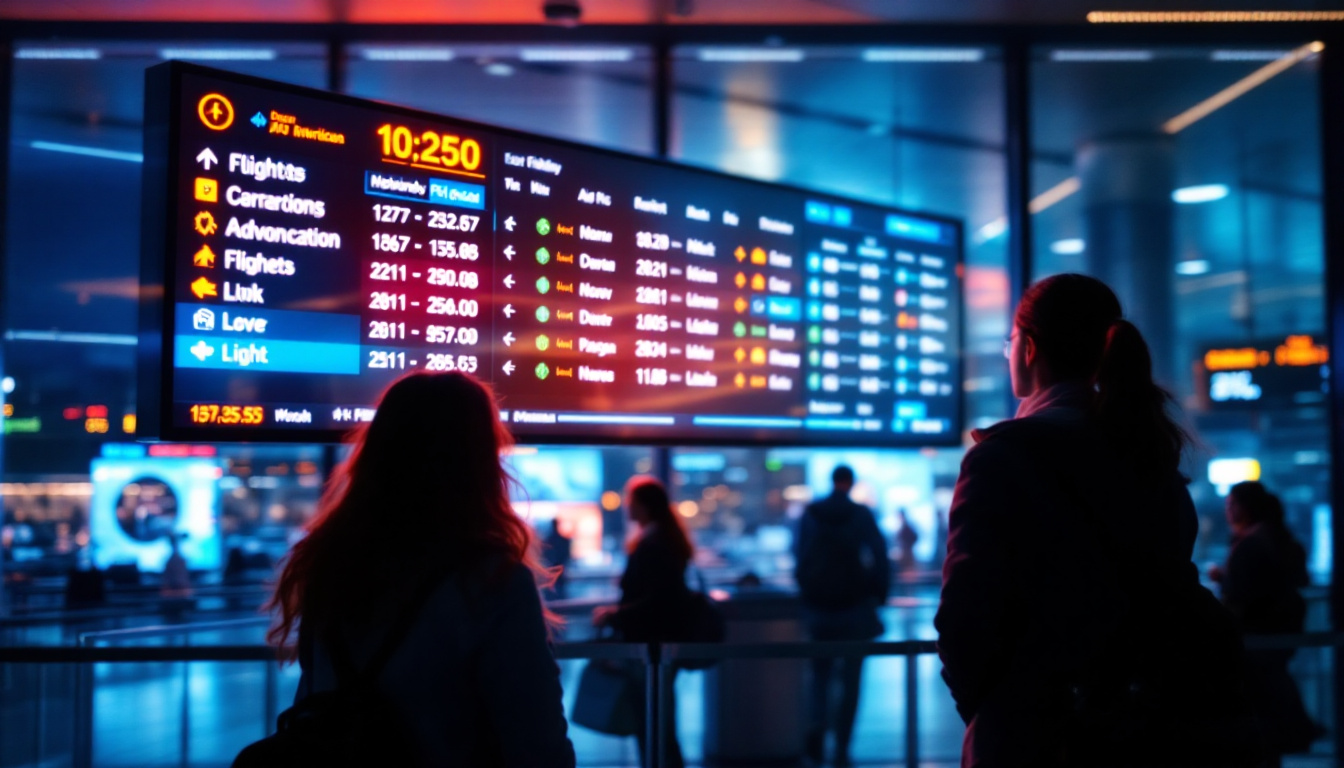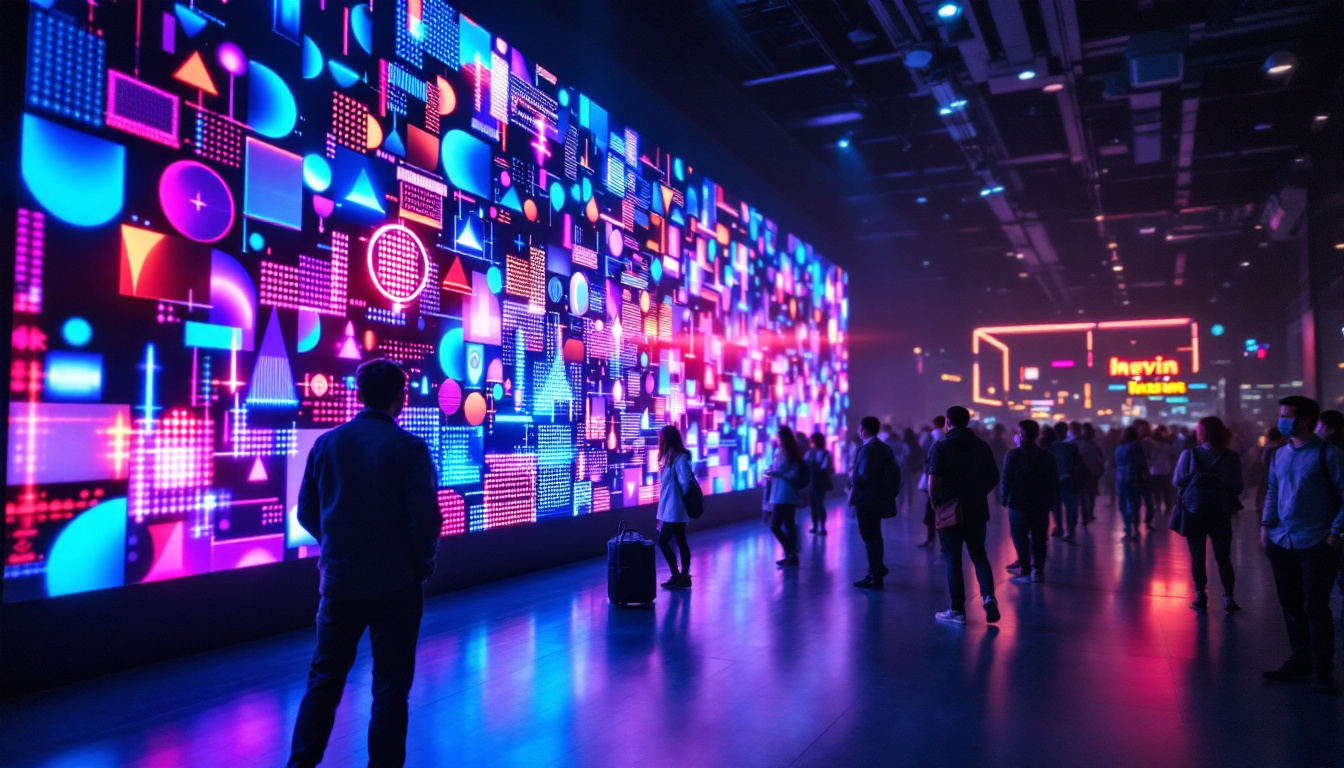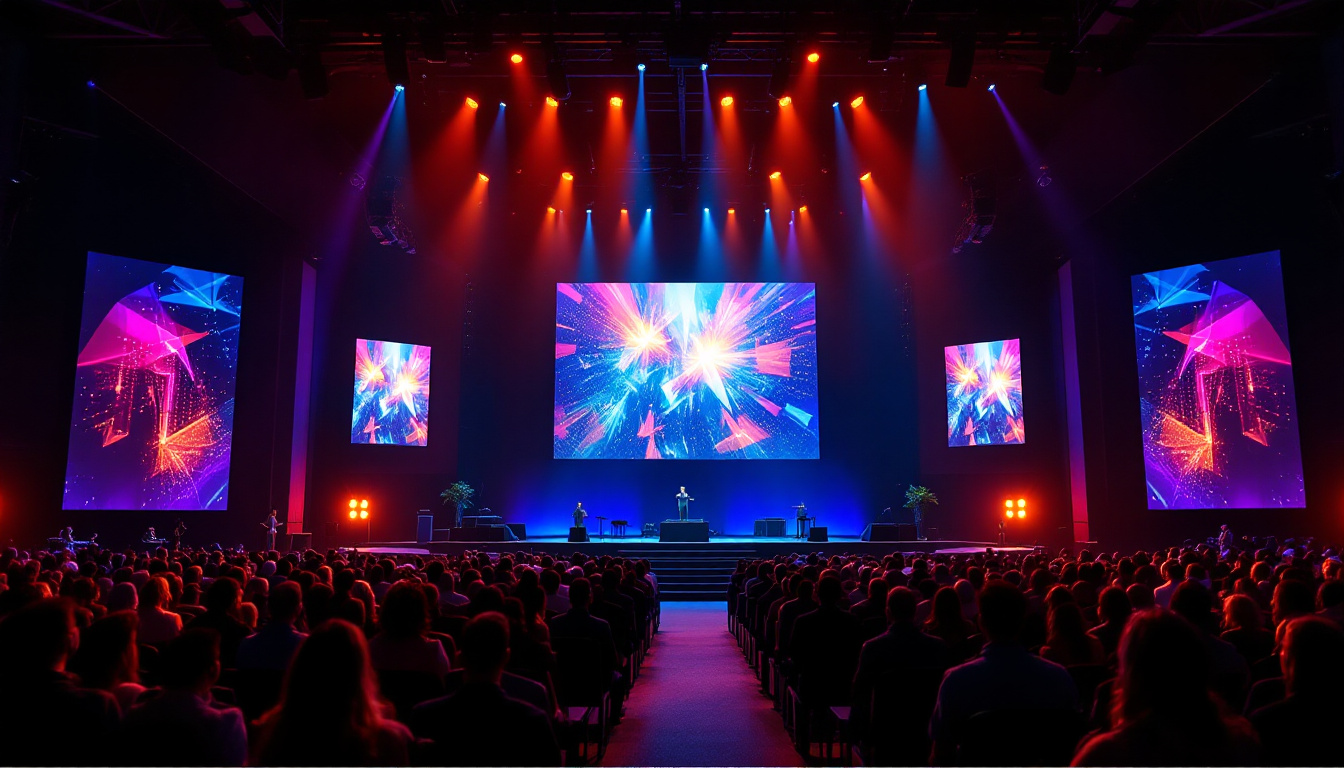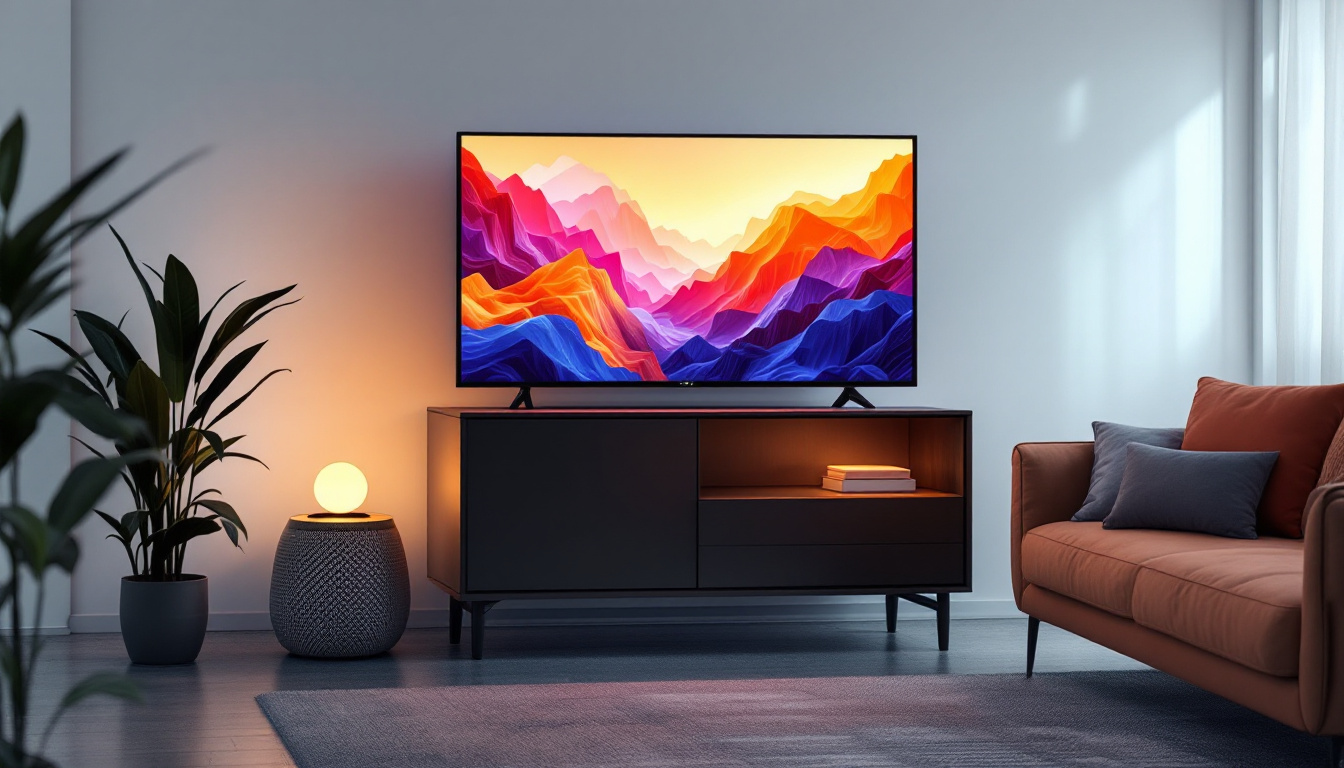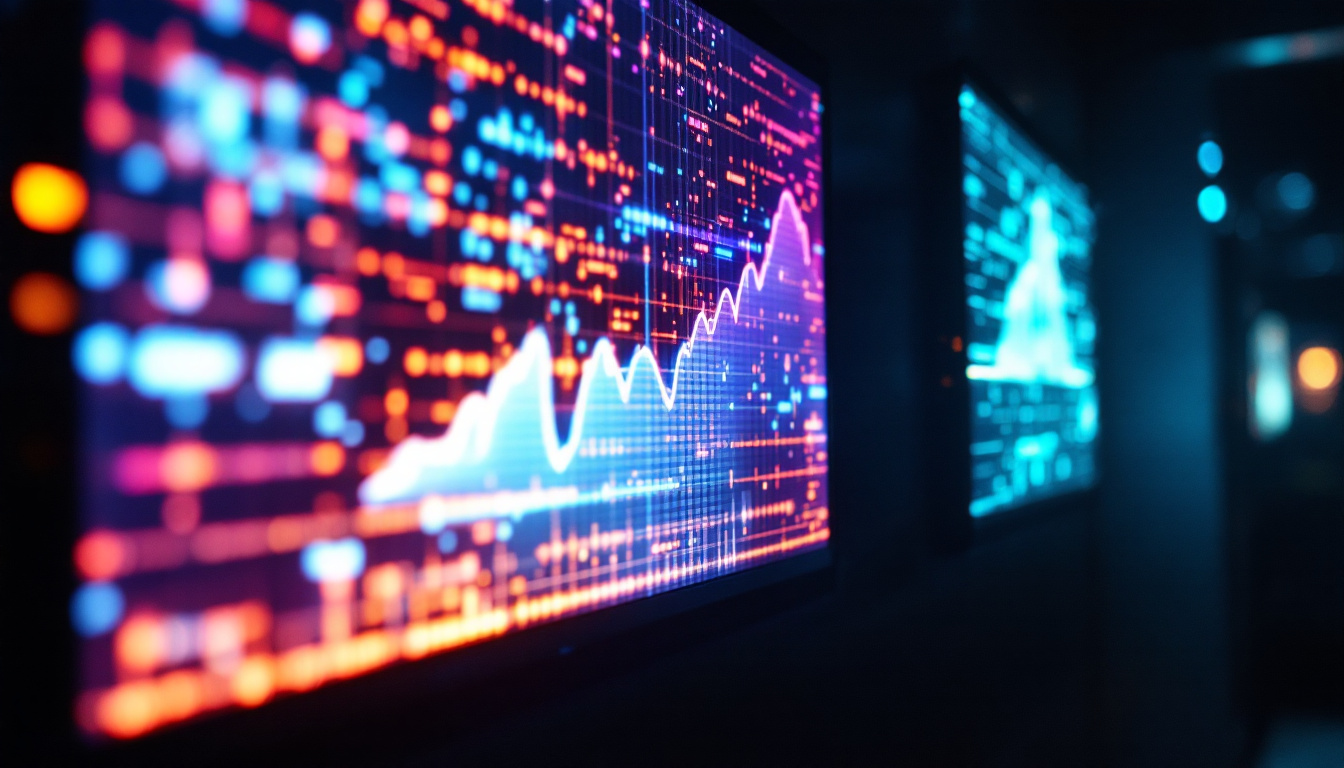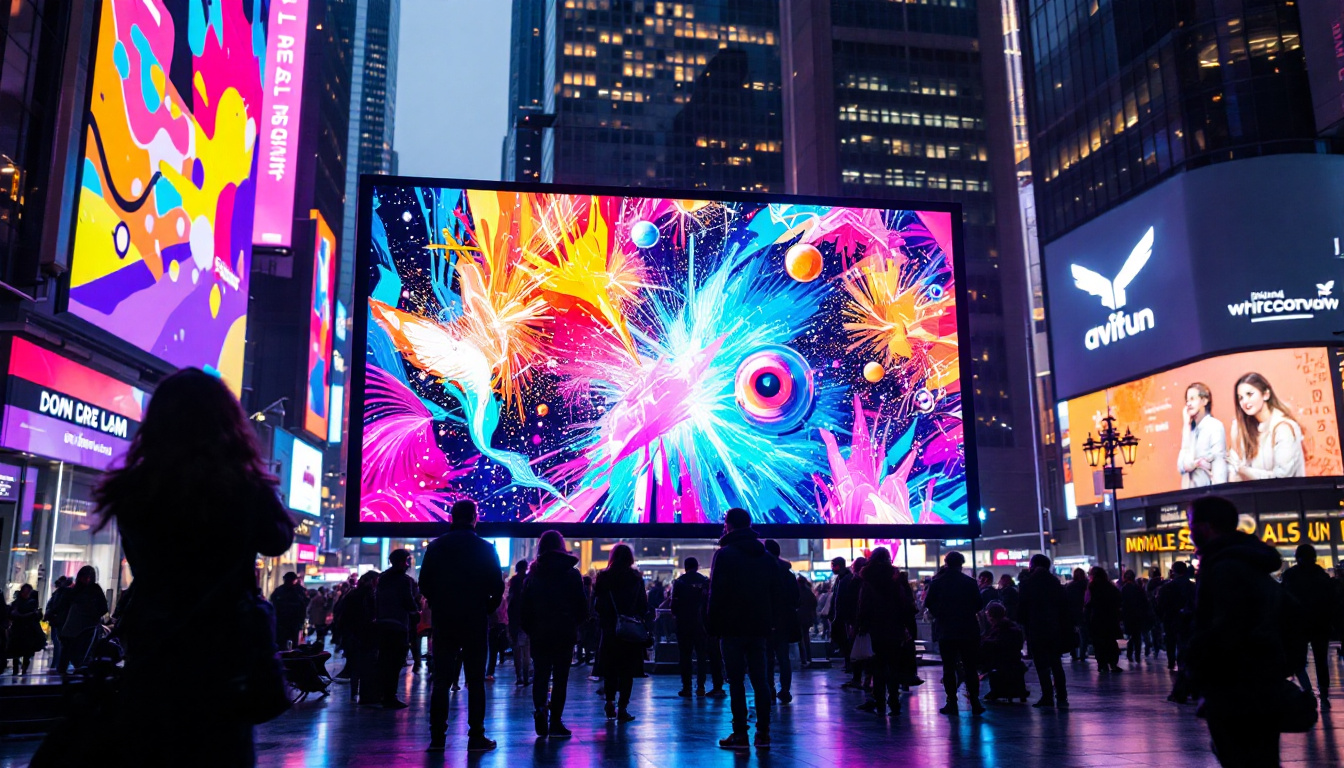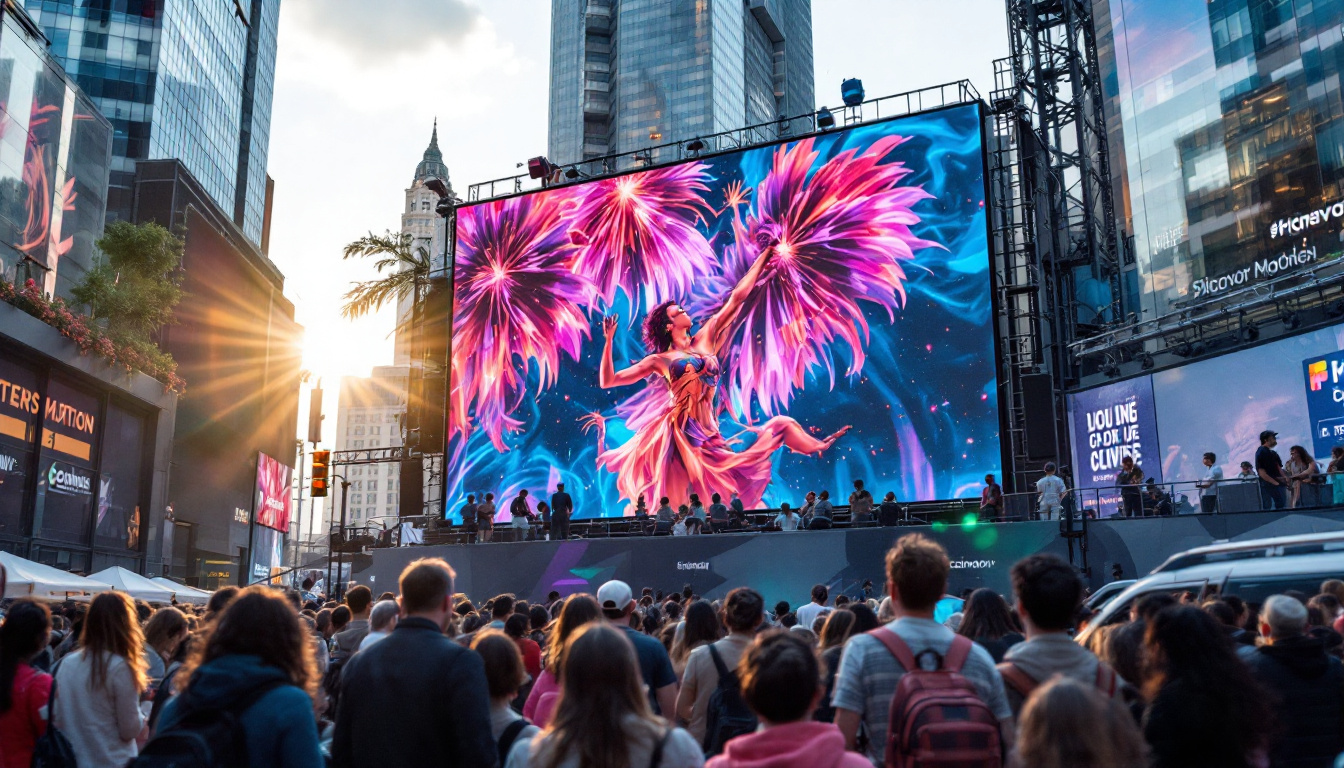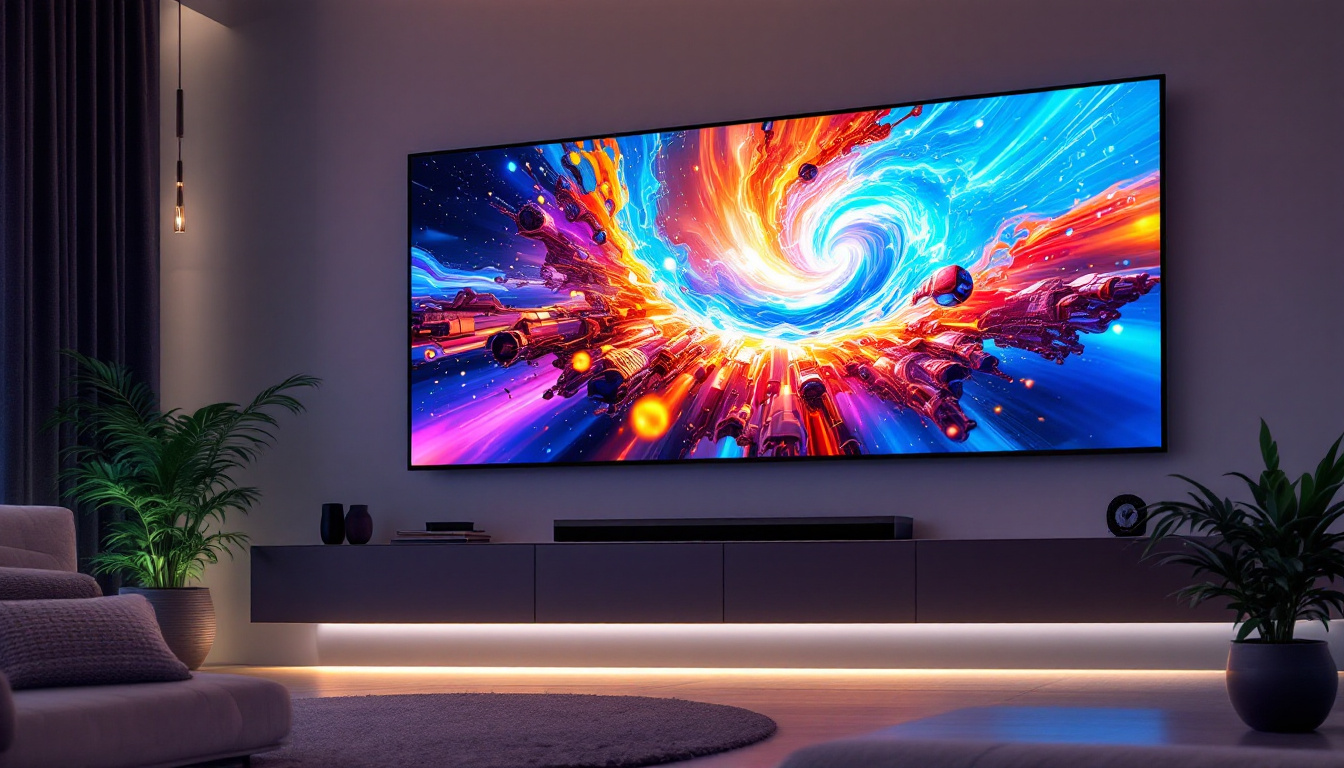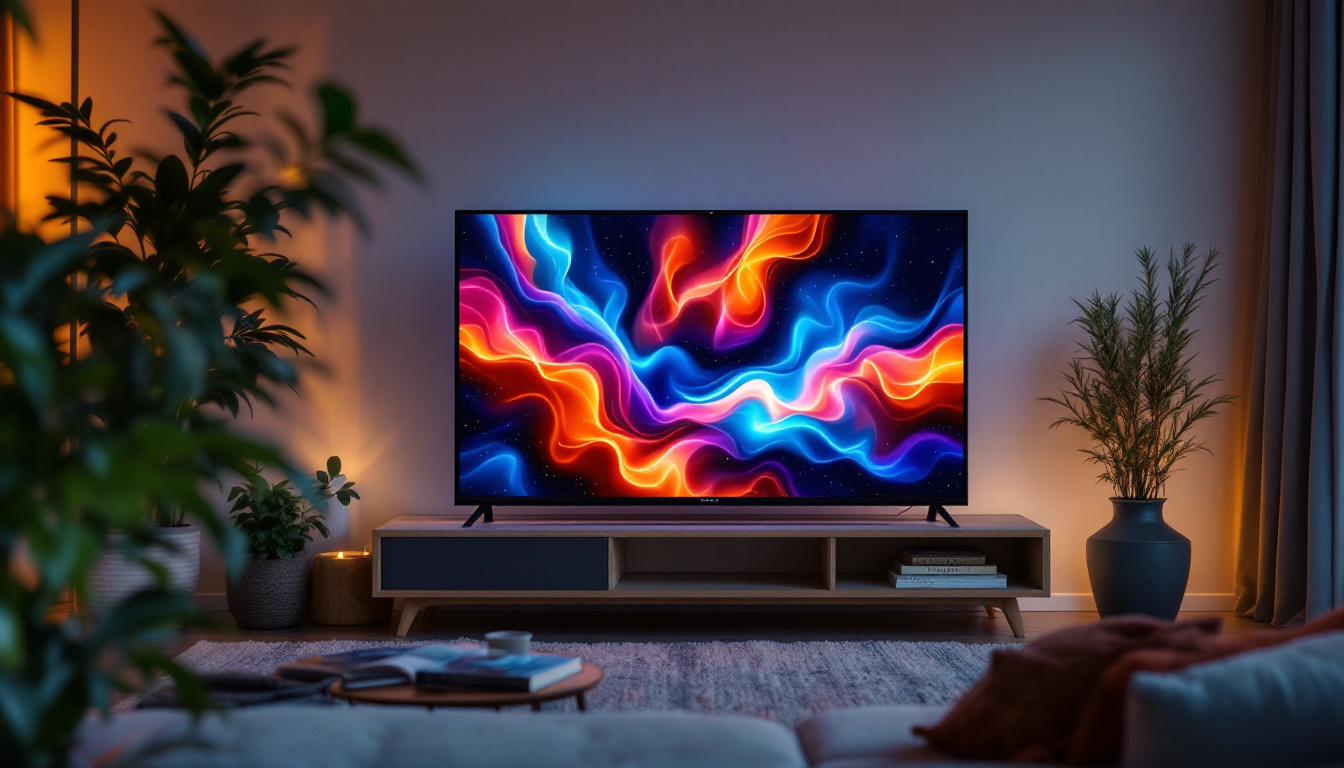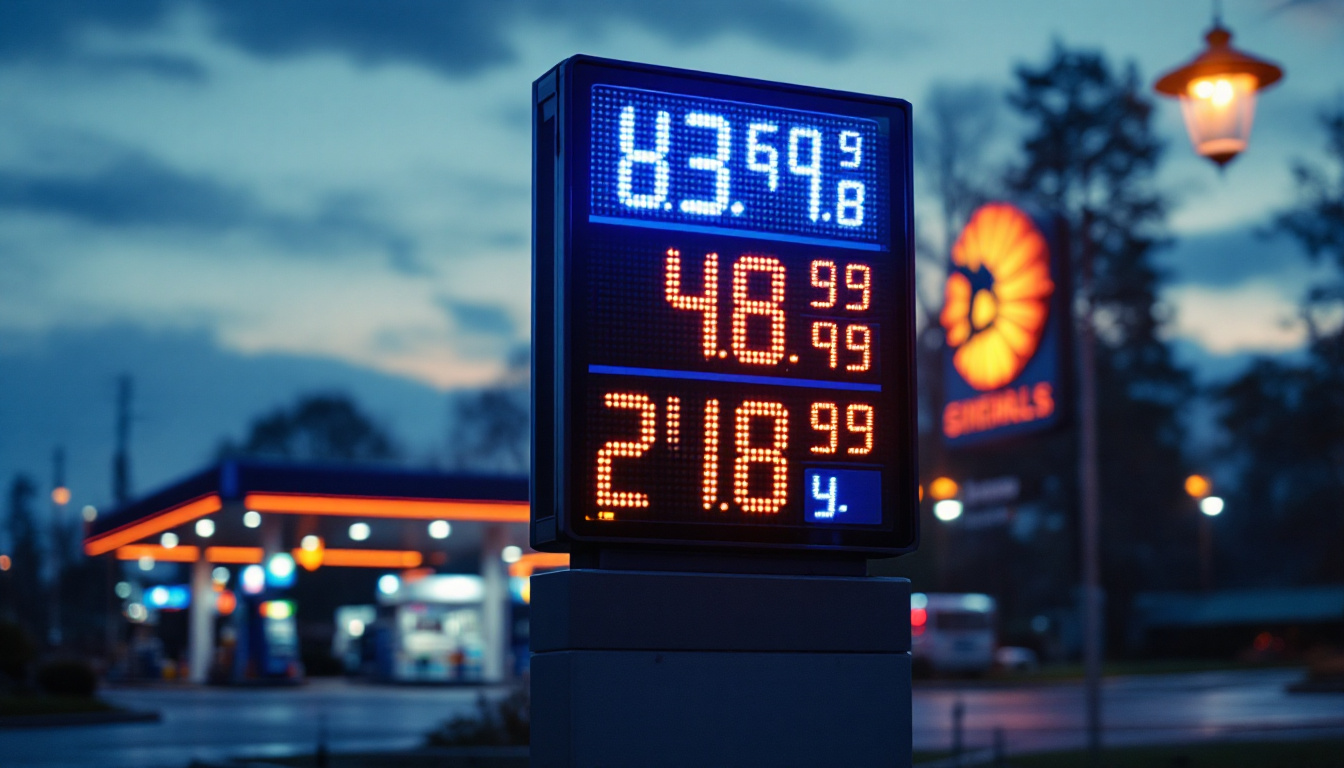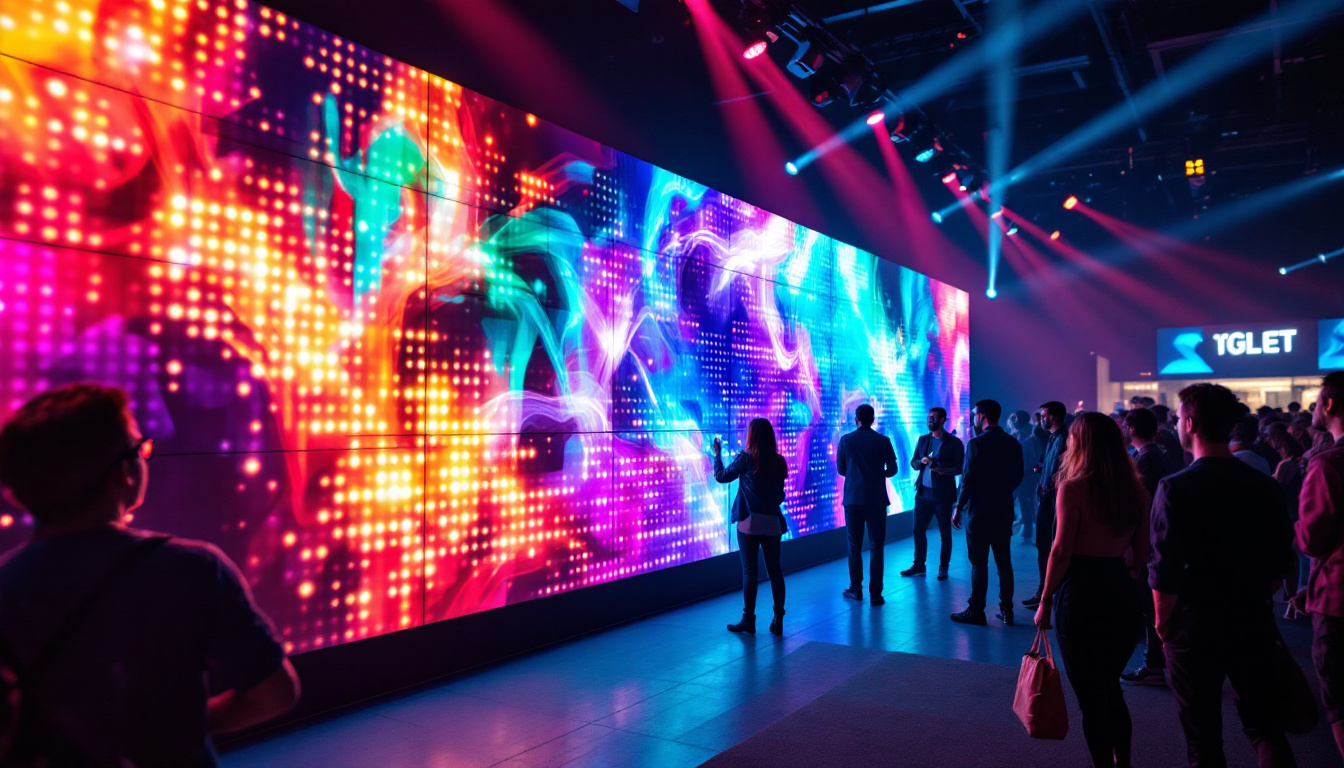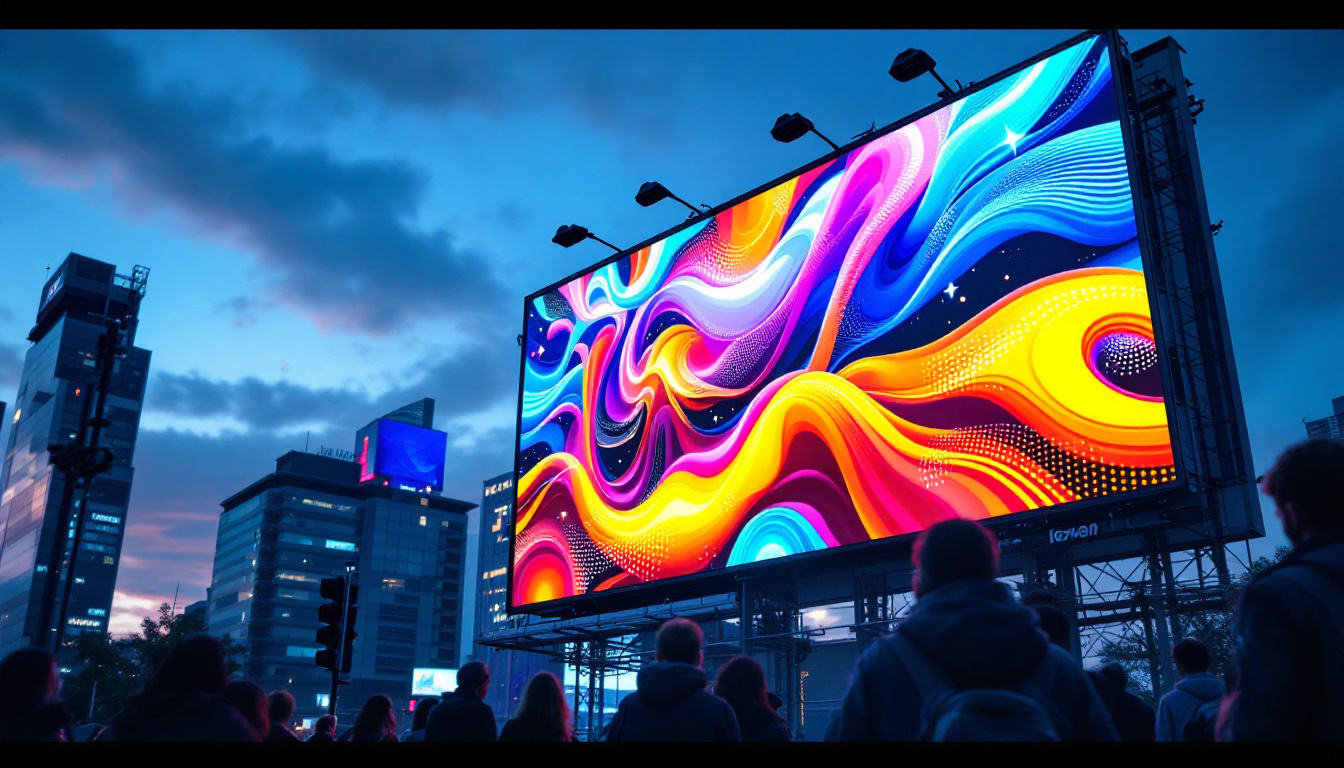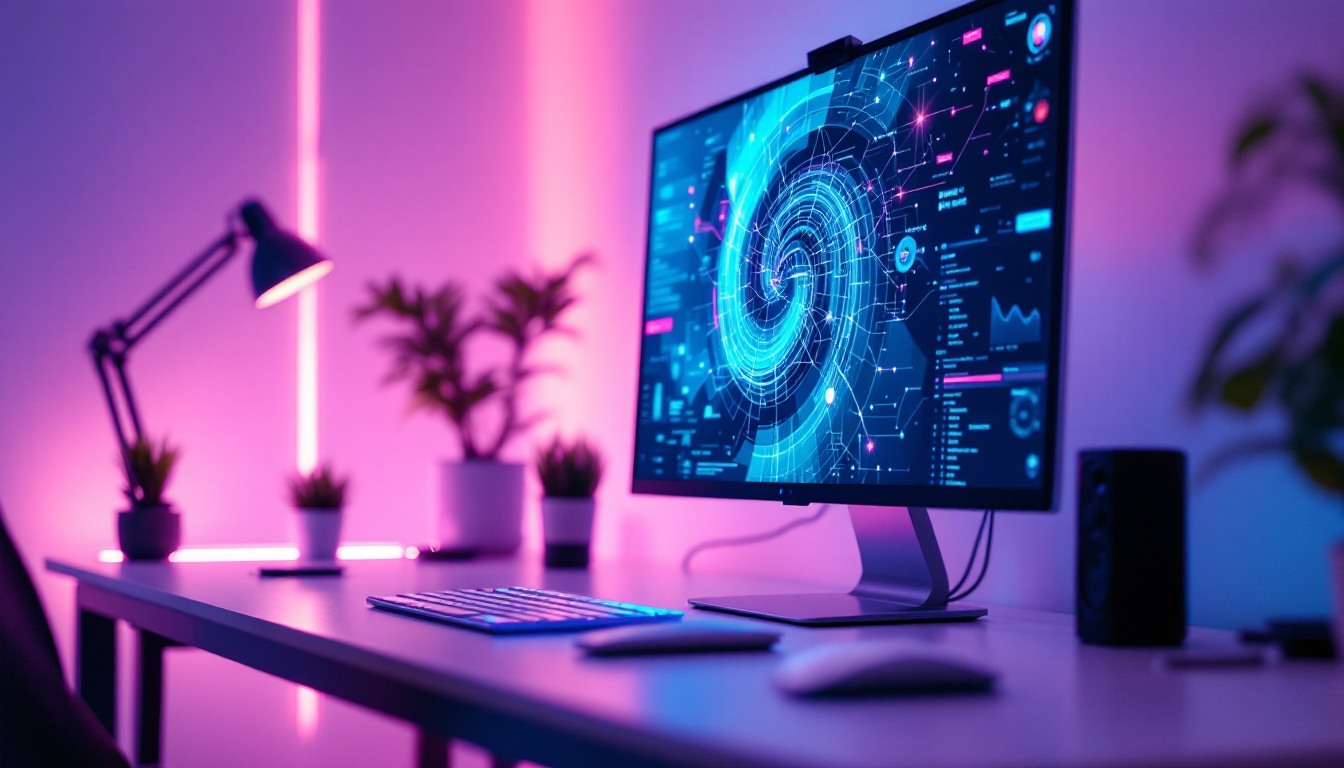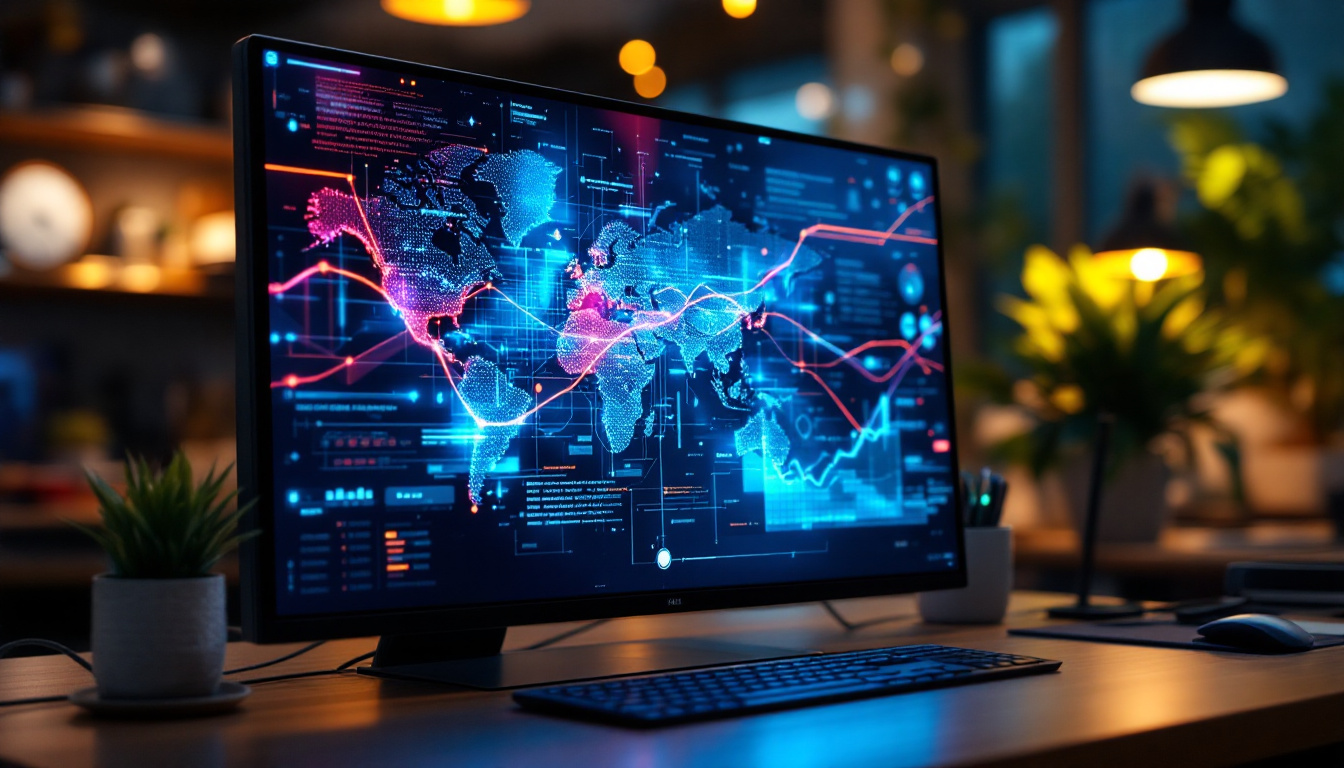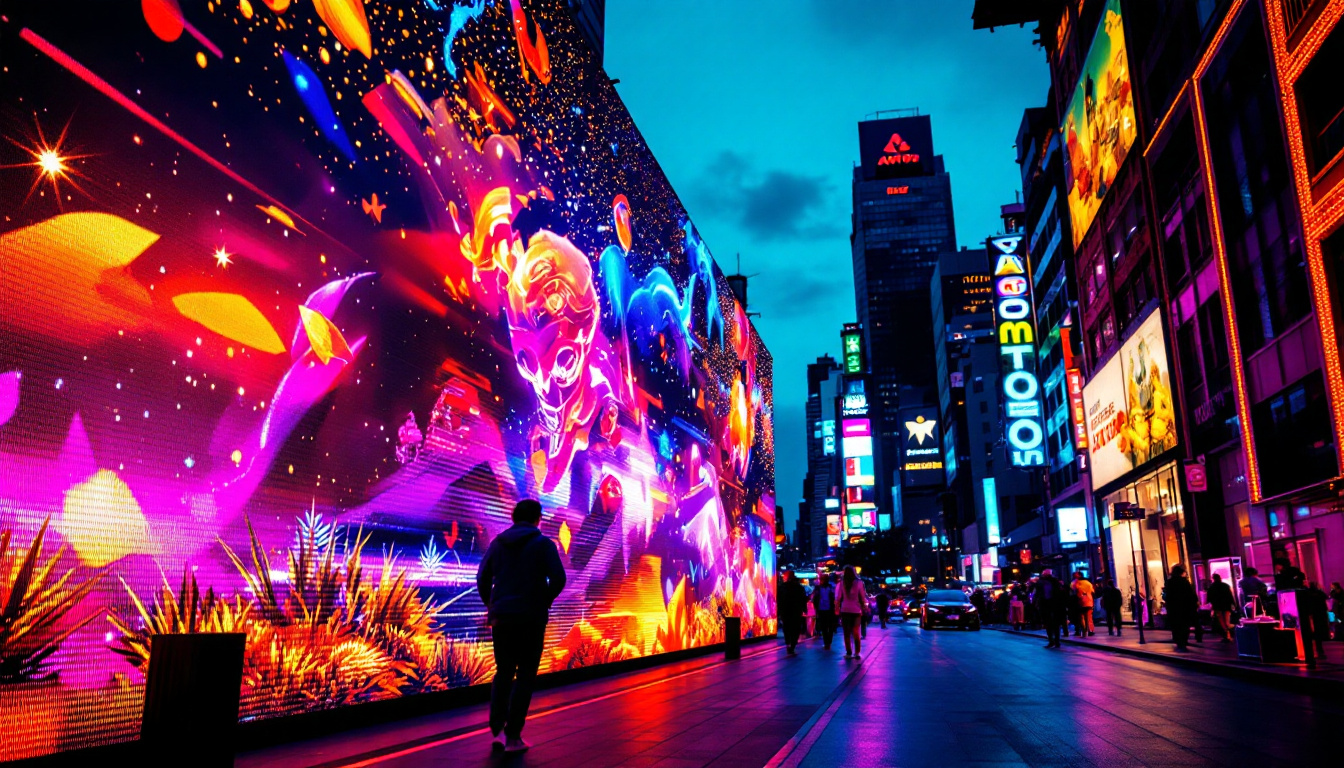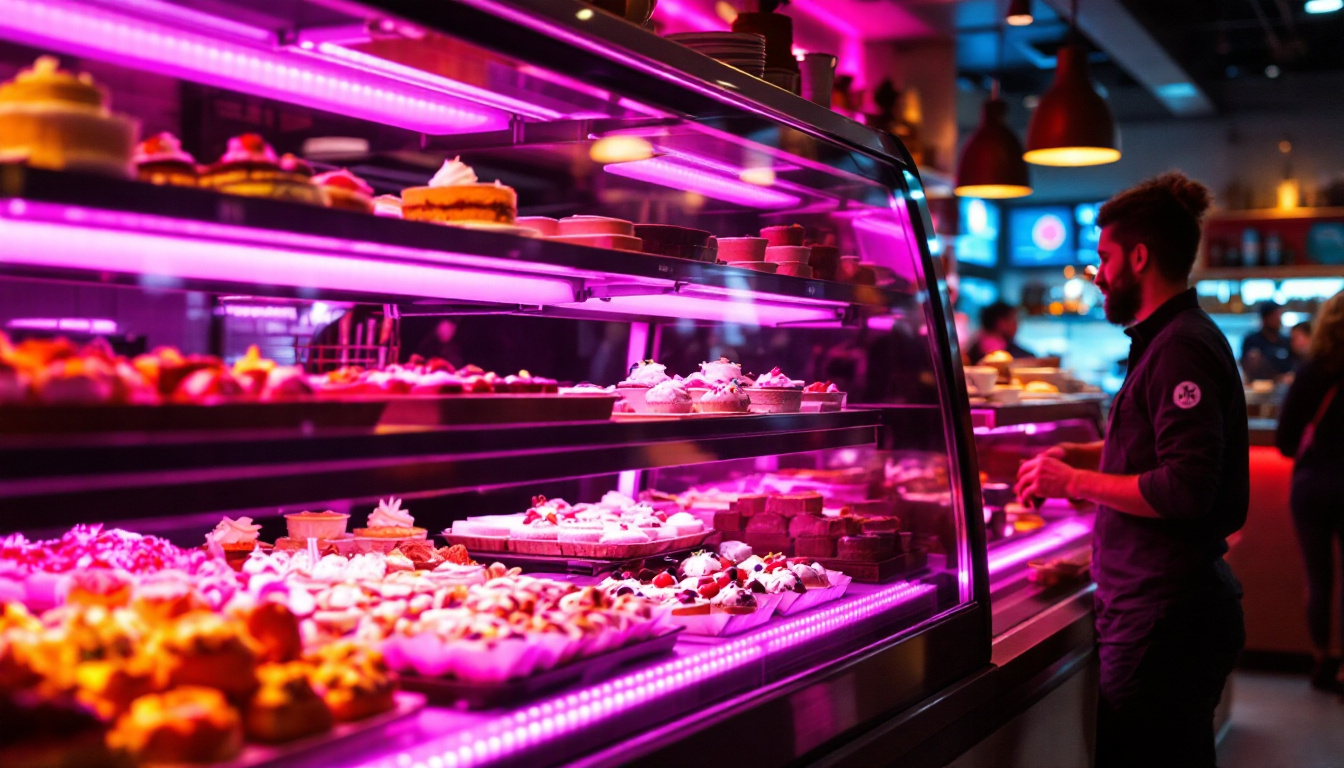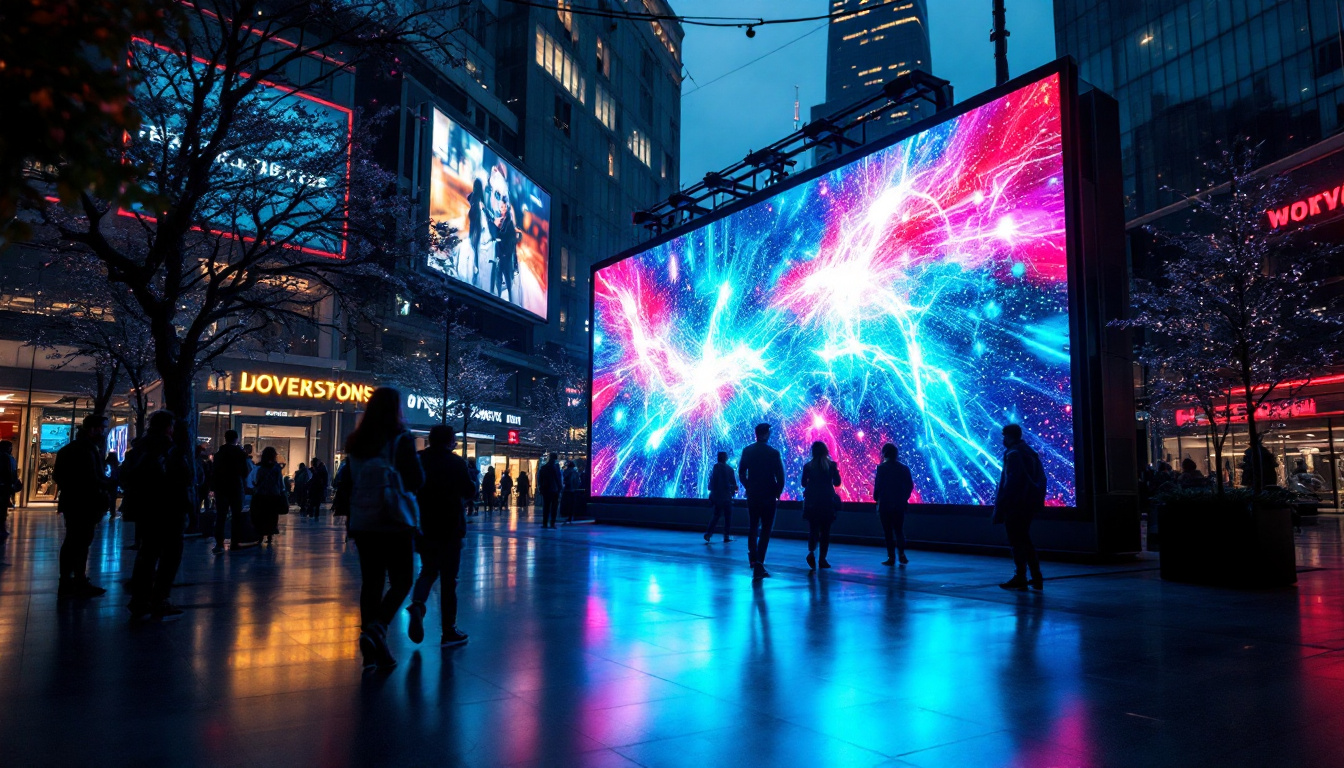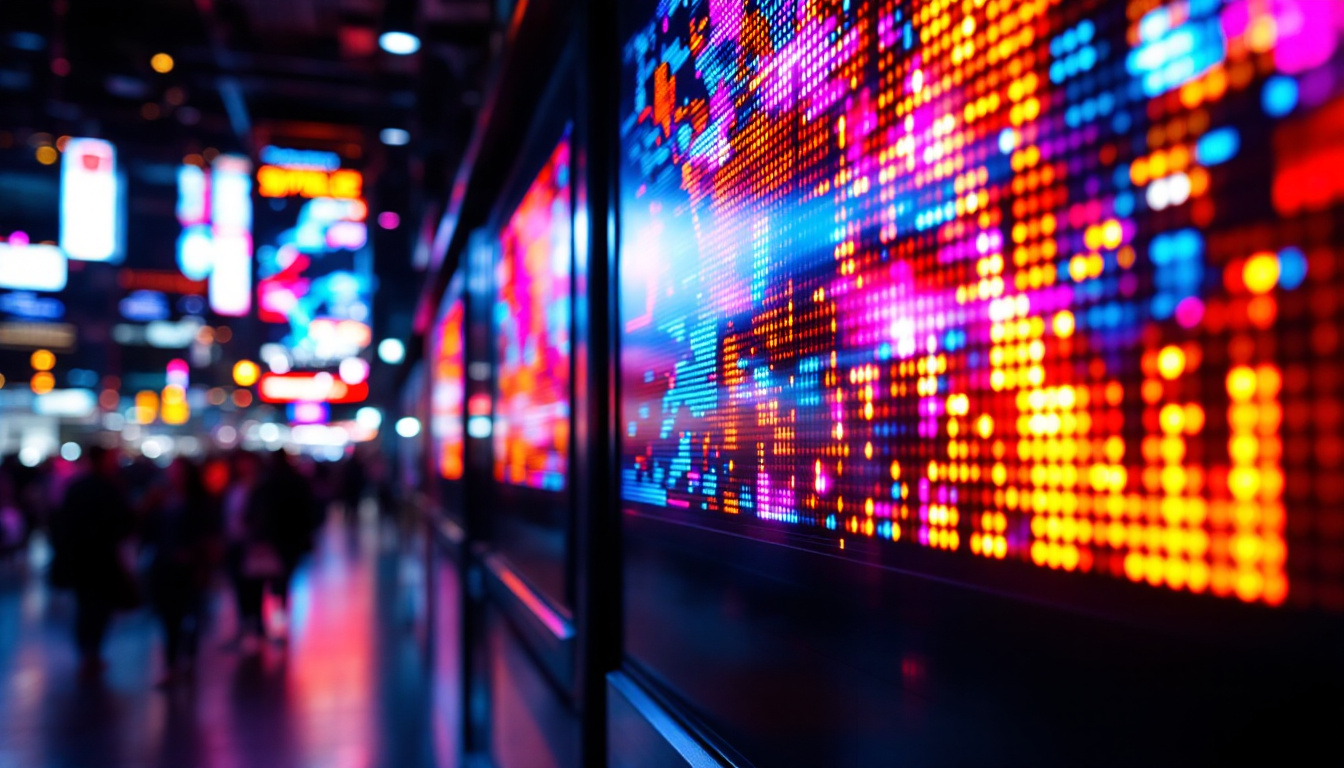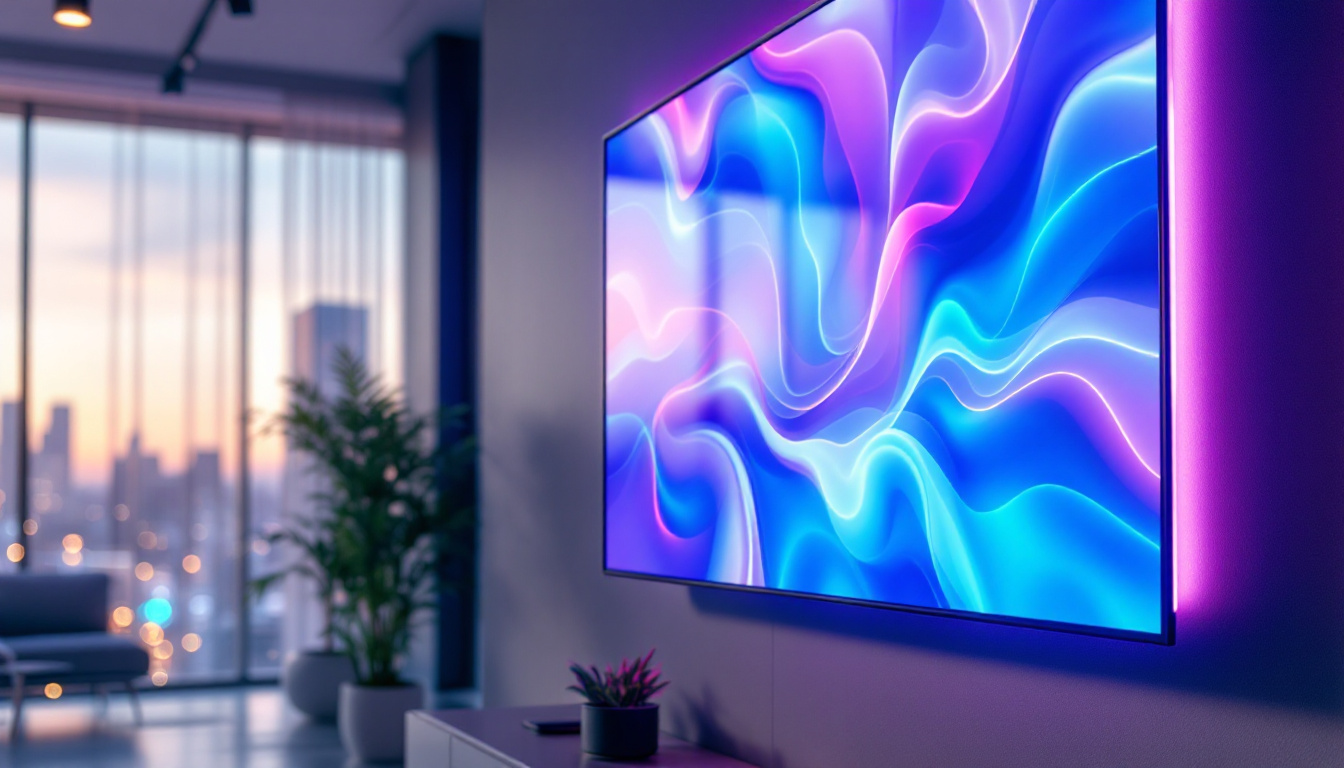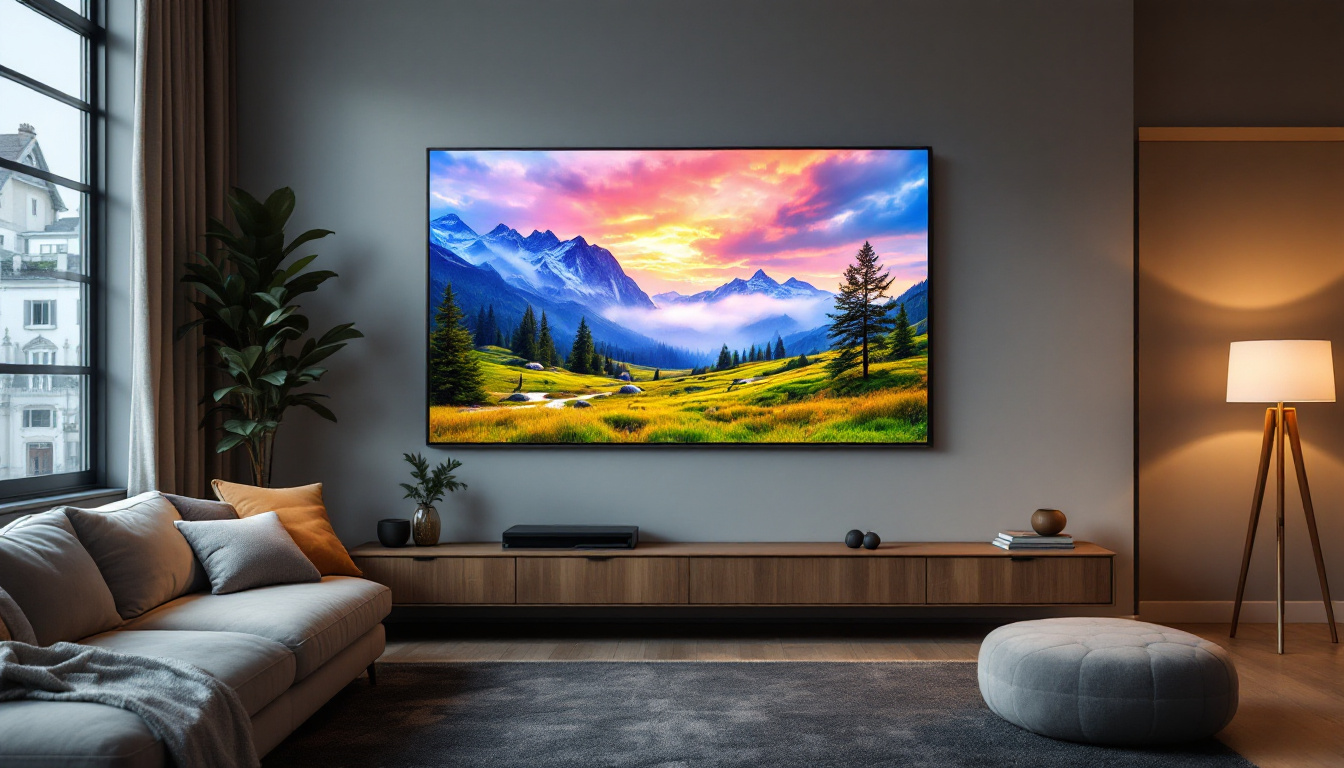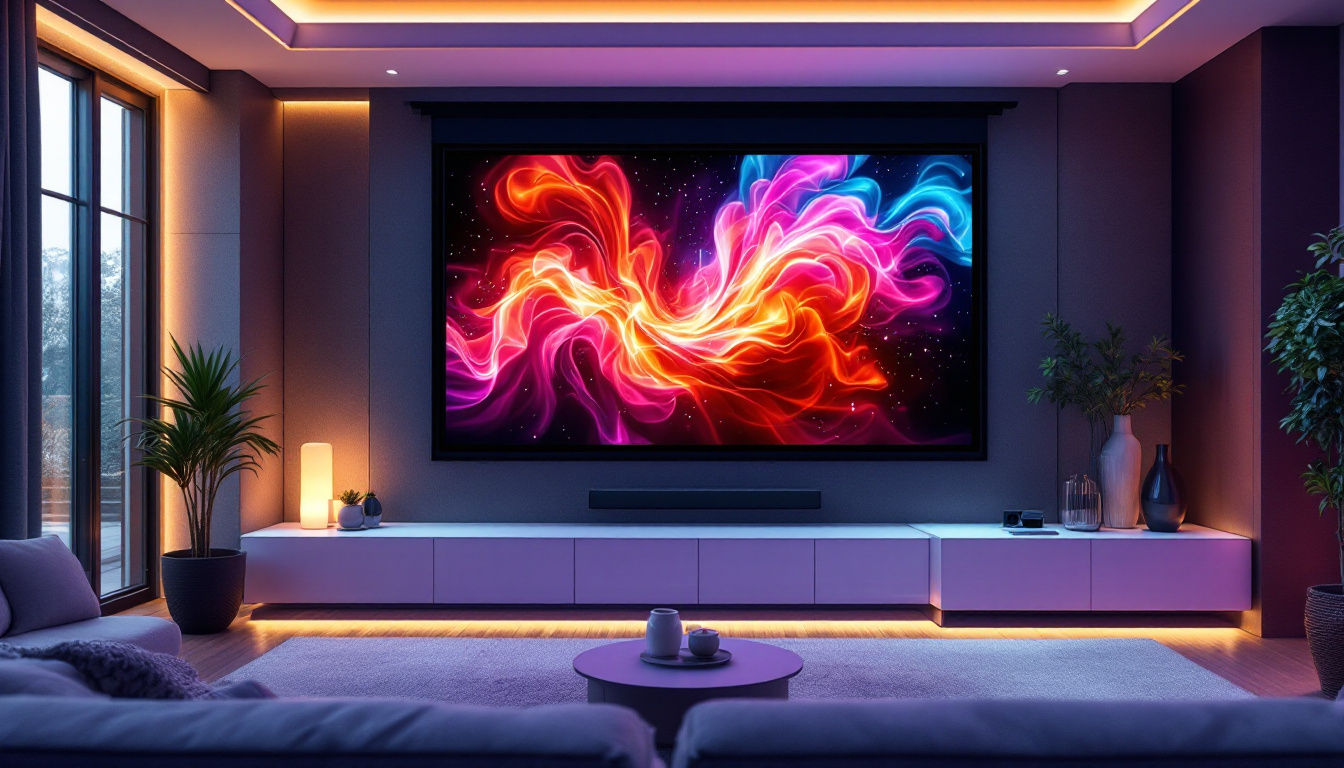Large Wall With TV: LED Display Explained
In today’s digital age, the integration of technology into our living spaces has transformed the way we experience entertainment. One of the most significant advancements in this realm is the development of large LED displays, particularly when used in conjunction with a wall-mounted television. This article delves into the intricacies of LED displays, their benefits, and how they can enhance the aesthetic and functional appeal of any room.
Understanding LED Technology
Light Emitting Diode (LED) technology has revolutionized the way images are displayed on screens. Unlike traditional LCD or plasma screens, LED displays use a series of tiny diodes to produce light, resulting in brighter and more vibrant images. This technology is not just limited to televisions; it has expanded into large wall displays that can transform any space into an immersive viewing environment. The versatility of LED technology has also led to its adoption in various sectors, including advertising, entertainment, and even architectural lighting, showcasing its ability to adapt to different contexts and needs.
How LED Displays Work
At the core of LED technology is the ability to produce light through electroluminescence. When an electric current passes through a diode, it emits light. In LED displays, thousands of these diodes are arranged in a grid to create images. This allows for a higher contrast ratio and better color accuracy compared to older technologies. The efficiency of LED technology also means that it consumes less power, making it an environmentally friendly option for consumers and businesses alike.
Additionally, many LED displays utilize backlighting techniques, where LEDs are placed behind an LCD panel to enhance brightness and color. This combination of technologies contributes to the stunning visuals that LED displays are known for, making them ideal for large wall installations. Furthermore, advancements in dimming technology have allowed for improved energy efficiency and extended lifespans for LED displays, ensuring that users benefit from both performance and longevity.
Types of LED Displays
There are several types of LED displays available, each catering to different needs and preferences. The most common types include:
- Direct View LED: These displays consist of individual pixels made up of LED lights, allowing for seamless images without any bezels. They are often used in large venues for advertising or presentations, providing a captivating visual experience that draws in audiences.
- LED-Lit LCD: This type uses LED backlighting behind an LCD panel. It is commonly found in consumer televisions and offers excellent picture quality. The combination of LED backlighting with advanced LCD technology has led to thinner, lighter televisions that do not compromise on performance.
- Organic LED (OLED): OLED displays use organic compounds to emit light, resulting in deeper blacks and more vibrant colors. They are often more expensive but provide superior image quality. The flexibility of OLED technology also allows for curved and ultra-thin screens, pushing the boundaries of design and functionality in modern display technology.
In addition to these types, there are also emerging technologies such as MicroLED, which promises even greater efficiency and brightness while maintaining the benefits of traditional LED displays. MicroLED technology uses microscopic LEDs to create images, offering the potential for even higher resolutions and improved energy consumption. As the demand for high-quality visual experiences continues to grow, innovations in LED technology will likely play a crucial role in shaping the future of display solutions across various industries.
The Benefits of Large LED Displays
Integrating a large LED display into a wall can significantly enhance both the functionality and aesthetics of a space. Here are some key benefits:
Enhanced Viewing Experience
Large LED displays provide an immersive viewing experience that smaller screens simply cannot match. Whether it’s for watching movies, playing video games, or giving presentations, the size and clarity of the display can captivate audiences and create a more engaging atmosphere.
Moreover, the high brightness and contrast levels of LED technology ensure that images remain clear and vibrant, even in well-lit environments. This makes large LED displays suitable for various settings, from living rooms to conference halls.
Space Optimization
When designed thoughtfully, a large wall-mounted LED display can serve as a focal point in a room, effectively optimizing space. Instead of bulky furniture or multiple screens cluttering the area, a single large display can provide all the necessary functionality while maintaining a sleek and modern appearance.
Additionally, many LED displays can be integrated with smart home systems, allowing for seamless control and customization. This capability further enhances the usability of the space, making it more versatile for different activities.
Energy Efficiency
Another significant advantage of LED technology is its energy efficiency. Compared to traditional display technologies, LED displays consume less power, which can lead to lower electricity bills over time. This is particularly beneficial for large installations, where the cumulative energy savings can be substantial.
Furthermore, the longevity of LED displays means that they require less frequent replacements, contributing to both cost savings and reduced environmental impact.
Designing a Large Wall Display
Creating a large wall display requires careful planning and consideration of various factors to ensure that it complements the overall design of the space. Here are some essential aspects to consider:
Choosing the Right Size
The size of the LED display is crucial in determining its impact on the room. A display that is too small may not provide the desired immersive experience, while one that is too large can overwhelm the space. A general guideline is to measure the distance from the seating area to the wall and choose a screen size that allows for comfortable viewing.
For instance, a common recommendation is to sit at a distance of 1.5 to 2.5 times the diagonal size of the screen for optimal viewing. This ensures that the viewer can enjoy the full detail and clarity of the display without straining their eyes.
Placement and Mounting Options
The placement of the display is another critical factor. Wall mounting is a popular choice, as it saves floor space and allows for a clean, modern look. However, it is essential to consider the height at which the display is mounted. Ideally, the center of the screen should be at eye level when seated.
Additionally, there are various mounting options available, including fixed mounts, tilting mounts, and full-motion mounts. Each option offers different levels of flexibility in positioning the display, so it’s important to choose one that aligns with the intended use of the space.
Integration with Surrounding Decor
To create a cohesive look, the large LED display should be integrated with the surrounding decor. This can be achieved through the use of frames, custom cabinetry, or even by incorporating the display into a feature wall with complementary colors and textures.
Moreover, consider the lighting in the room. Ambient lighting can enhance the viewing experience, while harsh overhead lights may cause glare on the screen. Dimming options or adjustable lighting can help create the perfect atmosphere for watching content.
Installation Considerations
Installing a large LED display is not a simple task and requires careful planning and execution. Here are some key considerations to keep in mind:
Professional Installation
While some may opt for a DIY approach, hiring professionals for the installation of a large LED display is highly recommended. Professionals have the expertise to ensure that the display is mounted securely and at the correct height, minimizing the risk of accidents or damage.
Additionally, professional installers can help with cable management, ensuring that wires are hidden and organized for a clean look. This attention to detail can make a significant difference in the overall aesthetic of the installation.
Connectivity and Compatibility
Before installation, it’s essential to consider the connectivity options available on the LED display. Most modern displays come equipped with multiple HDMI ports, USB ports, and even wireless connectivity options. Ensuring compatibility with existing devices, such as gaming consoles, streaming devices, or sound systems, is crucial for a seamless viewing experience.
Furthermore, consider the future-proofing of the installation. As technology evolves, having a display with multiple connectivity options can save time and money in the long run.
Calibration for Optimal Performance
Once the display is installed, calibration is necessary to achieve optimal performance. This involves adjusting settings such as brightness, contrast, and color balance to ensure the best possible image quality. Professional calibration services can provide a tailored solution to meet the specific needs of the space and the viewer’s preferences.
Maintaining Your Large LED Display
To ensure the longevity and performance of a large LED display, regular maintenance is essential. Here are some tips for keeping the display in top condition:
Regular Cleaning
Dust and fingerprints can accumulate on the screen, affecting image quality. It is advisable to clean the display regularly using a microfiber cloth and a gentle cleaning solution specifically designed for screens. Avoid using abrasive materials or harsh chemicals, as these can damage the display.
Additionally, the surrounding area should also be kept clean to prevent dust from settling on the display. Regularly vacuuming the space can help maintain a dust-free environment.
Software Updates
Many modern LED displays come with smart features that require software updates to function optimally. Regularly check for updates and install them as needed to ensure that the display operates smoothly and benefits from the latest features and security enhancements.
Monitoring Performance
Keep an eye on the performance of the display. If there are any noticeable changes in image quality, such as flickering or color distortion, it may be time to consult a professional for troubleshooting. Early detection of issues can prevent more significant problems down the line.
Conclusion
Large wall-mounted LED displays have the potential to transform any space, offering an unparalleled viewing experience while optimizing aesthetics and functionality. Understanding the technology behind LED displays, their benefits, and the considerations for installation and maintenance is essential for maximizing their impact.
As technology continues to evolve, the possibilities for large LED displays will only expand, making them a worthwhile investment for both personal and professional environments. Whether for entertainment, presentations, or advertising, these displays are set to play a significant role in the future of visual communication.
Discover the Future of Visual Experience with LumenMatrix
Ready to elevate your space with cutting-edge LED display technology? LumenMatrix is at the forefront of innovation, offering a wide array of LED display solutions tailored to your needs. From immersive Indoor LED Walls to dynamic Outdoor LED Displays, and from versatile Vehicle LED Displays to sleek LED Poster Displays, our products are designed to captivate and engage. Explore our LED Sports Displays, interactive Floor LED Displays, and customizable options that will transform your visual communication. Experience the revolution in digital signage with LumenMatrix and make a lasting impression. Check out LumenMatrix LED Display Solutions today and step into a world of vibrant clarity and impact.


